Bibio marci - Hawthorn Fly and Bibio pomonae - Heather Fly
Phylum: Arthropoda - Class: Insecta - Order: Diptera - Family: Bibionidae
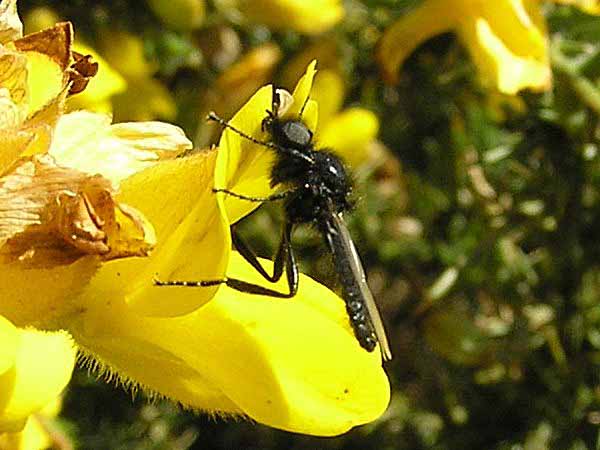
On sunny spring days, hawthorn flies flit across meadows, along the hedgerows and among low bushes. Instantly recognisable by their long trailing hindlegs, these swarthy flies hatch in their millions and sometimes cause concern when they arrive in people's gardens. They are in fact non-biting and do not sting. If there is a good breeze, particularly on exposed upland streams and lakes,considerable numbers of Hawthorn Flies end up on the surface of rivers, streams, reservoirs, lakes, ponds and canals.
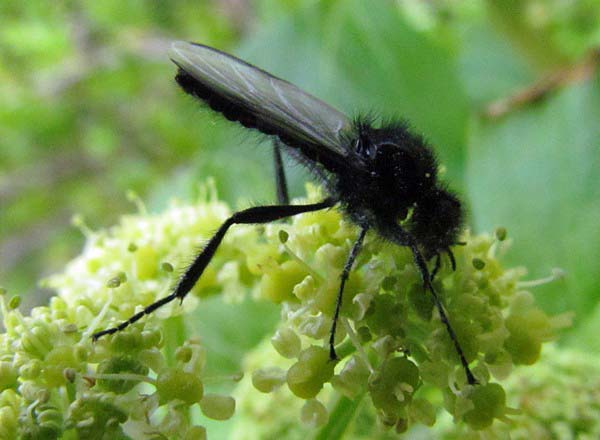
In waters containing trout, grayling or other kinds of fish that feed on floating insects, Hawthorn Flies are usually the first of the terrestrial insects to cause a worthwhile rise.
The large female hawthorn flies begin hatching around St Mark's day, which is 25th April, although their smaller mates are sometimes seen a week or so earlier. The hatch is generally over by mid May.
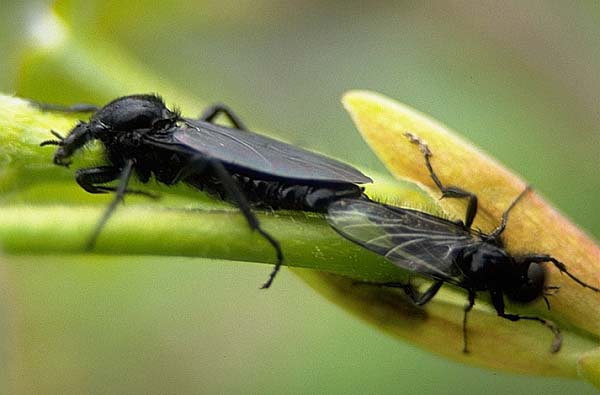
In the picture above you can see how much larger the female (on the left of the picture) is than the male (seen on the right).
In meadowland you will often see swarms of Hawthorn Flies rushing about just above head height. Once on the water, it is rare for a Hawthorn Fly to escape the attention of feeding trout.
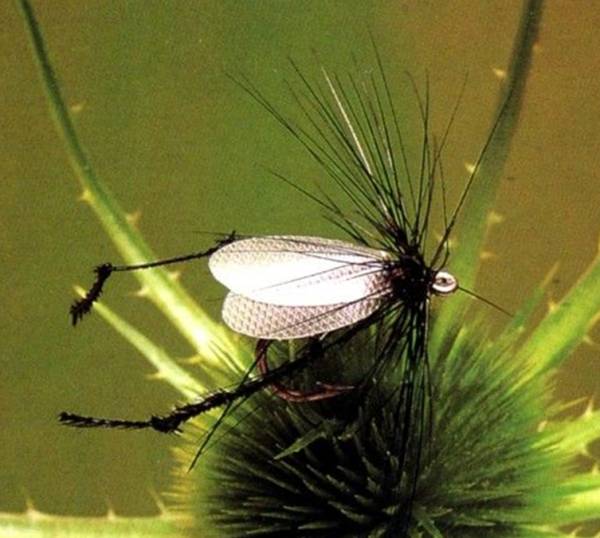
Hawthorn imitation (Jon Beer)
This simple but very effective pattern was devised by Jon Beer, for whom the Hawthorn Fly is a firm favourite. The hook is a size 14.
Heather Fly Bibio pomonae
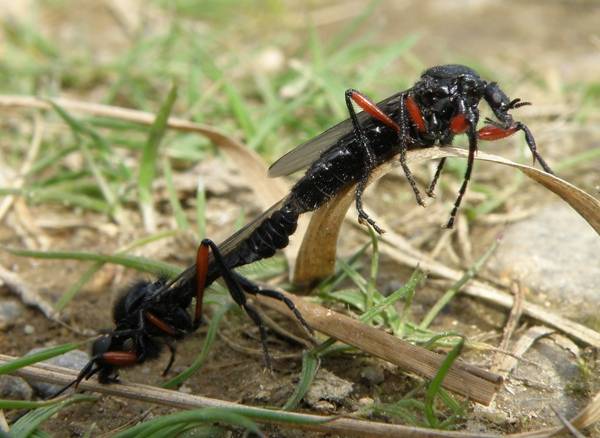
Very similar to the Hawthorn Fly, dut distinguished by it red thighs, is the Heather Fly, a summer terrestrial insect that also gets blown on to upland lakes and rivers. Use the same artificial fly to imitate Hawthorn Flies and Heather Flies; trout won't be able to see the difference!.
Fishing tip
Although stillwater trout will sometimes take a 'retrieved' hawthorn fly fished just below the surface, dry fly tactics are usually best when tackling river trout and 'educated' stillwater trout.
Excited at the prospect of flyfishing? So are we, and we're pretty sure you would find the Winding River Mystery trilogy of action-packed thrillers gripping reading too. Dead Drift, Dead Cert, and Dead End are Pat O'Reilly's latest river-and-flyfishing based novels, and now they are available in ebook format. Full details on our website here...
Buy each book for just £4.96 on Amazon...
Please Help Us: If you have found this information interesting and useful, please consider helping to keep First Nature online by making a small donation towards the web hosting and internet costs.
Any donations over and above the essential running costs will help support the conservation work of Plantlife, the Rivers Trust and charitable botanic gardens - as do author royalties and publisher proceeds from books by Pat and Sue.
